The North of Nigeria has a long tradition of excellence in meat preparation and handling from Tsire to Dambu, Kilishi to Balangu, these specialty meats delight palates the world over particularly in Nigeria.
My reading and research suggests that Suya is the umbrella name for many meat products from the north of Nigeria though in its common use, it refers to skewered meats. What is interesting about some of these meats is how long they can keep – evidence perhaps of nomadic roots. Dambu – meat floss and kilishi are super-dried ‘intermediate moisture’ meat products, made with preservation techniques that allow them stay shelf-stable without refrigeration for weeks and months – they rarely last that long at mine though :).
Suya is a hausa word that means ‘to fry or fried’.
Suya is a Hausa word meaning “to fry”, I guess the logic is that the beef fries in its own fat once it is on grill. The story goes that once there were Hausa cattle herders that travelled all over the country for trade and green pastures for their herd. It is thought that at night they would sit around camp fires resting from their travels, grilling meat skewered on bamboo if they could find any, or use their daggers or swords as a skewer. These travelling herdsmen were nomads by nature and I bet the towns they visited loved the smell and taste of this delicacy (who wouldn’t?). Seeing the commercial value, the herdsmen refused to divulge the secret recipe of their Yaji but instead left one of their compatriots to tend to their new converts.
And that’s how the popularity of Suya spread far and wide all over the world, even Jamie Oliver has his own spin of the Nigerian Suya. There is no neighbourhood in Nigeria without its resident Mai Suya (who is always definitely a Northerner!), this spicy snack has become a national treasure. Nigerians in diaspora will tell you one of the things they miss most is a good juicy stick of suya, it is the smell of home. Actually someone should make the scent of suya and sell it… I might be on to a new business idea…; Source – Bukas and Joints
For most of the meat prep and cooking, yaji – a dried mixed spice rub with peppers, garlic, ginger and more is the seasoning of choice. Except for Balangu which is slow-cooked in its own fats and juices.
Tsire
Tsire, what we – down south east and west – know as suya is boneless, grilled meat; dredged in yaji, commonly skewered and grilled.
Small pieces of meat – commonly beef, chicken – and offal, are dredged in yaji and flame-grilled over open coals till cooked through. In most parts, the ‘suya’ is warmed again over coals prior to serving. This twice-heated method intensifies the smoky flavours creating a gorgeous, nutty, meaty outcome.
In some places like Glover Court – Lagos, the suya/ tsire once warmed is dipped in sizzling oil, prior to serving. Perhaps this was the original way to make it!
To serve, the grilled meat is commonly sliced off the sticks and fresh vegetables sliced in addition – tomatoes, onions, chilli pepper.
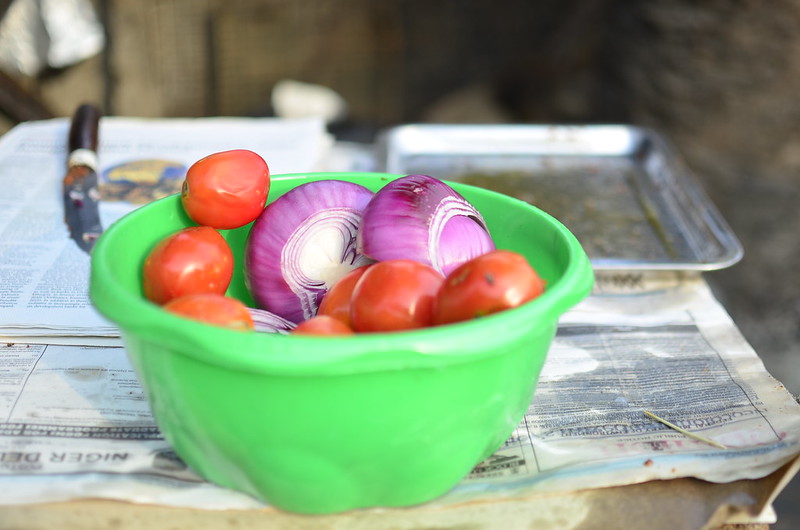
The men use sharp/ curved knives to slice the meat off the sticks. Some sticks of meat has wings. Almost.
I wonder if female Suya preparers exist for I’ve never met one. Have you?
Dambu
Commonly made from beef, ram, poultry – chicken, guinea fowl and fish, Dambu is similar to Chinese/ Filipino Meat floss.
Boneless, small cuts of meat are combined with spices – like yaji and water and cooked till soft. They are then pounded into shreds in a mortar and pestle before the meat is shallow fried. The end result is a brown, crispy-chewy meat product.
Dambu from different meats goes by different names. If you speak of Dambu in general, you say ‘Dambu’. If speaking of a specific kind, the noun is ‘conjugated’ sort of so that
- Dambu from beef is known as dambun nama or dambun saniya. Dambu takes on an ‘n’ as the last letter.
- From chicken, dambun kazaa
- From goat meat, dambun akuya
- From fish, dambun kifi
- From guinea fowl, dambun zabuwa
- From ram, dambun rago
- From duck, dambun agwagwa
- From camel, dambun rakumi
Kilishi
Like – but not – jerky, kilishii is the snack everyone asks for when you return from a visit to Northern Nigeria. ‘What did you buy/ bring? Kilishi?’ I love it, not just for its taste but for it’s looks. It makes me think of crochet with its holes, as though you could hang it on the wall as art.
A seasoning paste, from groundnut or tigernuts is made and applied to the sliced, pounded meats, before they are sun dried.
A paste made from peanuts called “Labu” is diluted with enough water, spices, salt and grounded onions and perhaps sweeteners in addition like honey to add sweetness. The already dried “sheets” of meat are then immersed one by one into the “Labu” paste to coat it, whereafter it is left to dry for hours before roasting on a wire mesh. Kilishi can be kept for months without much change to its taste; Source – African Foods
Kano and its Agadasawa people are key producers of kilishi where they make various types – sweet with honey; salty; nutty with peanuts or tiger nuts, and much more.
And really, what’s suya without the major ingredient…Yaji (Suya spice). Whoever came up with this recipe is a total genius i tell you. If you ask me, i’d say it was born out of a need to avoid waste especially after extracting the oil from roasted groundnut which is the base for the spice. The left-over paste known as “Labu” is then stripped of excess water and used in the preparation of kuli kuli or dried into powdered form for suya spice: Source – Dobby’s Signature
Once they are dry, they are hot/ fire cooked. I expect this is part flavour, part preservation technique. And then, our kilishi are ready for us.
Historically, Kilishi was the preserve of emirs and warriors, for whom it was reserve food during war
I sometimes make dambu of it. It makes a great snack, a wonderful accompaniment to soaked garri and more.
Balangu
Sokoto state is arguably the meat capital of Nigeria and Balangu – spit roasted/ fire roasted meat on brown paper – which doesn’t burn by the way, is testament and testimony.
The meat is sliced thin and slow-cooked essentially in its own juices and with its own fat. Little to no seasoning is added till it is cooked through. It is a high moisture specialty meat. Similar ‘brown paper’ meats are common in Cotonou.
I found it super delicious – moist, tender with the essence of the ram flavour. It was served with gurasa – clay baked flat bread and sweet potato fries.
So there, here are specialty meats from the Arewa Kitchen to add to the gorgeous specialty breads and pancakes.

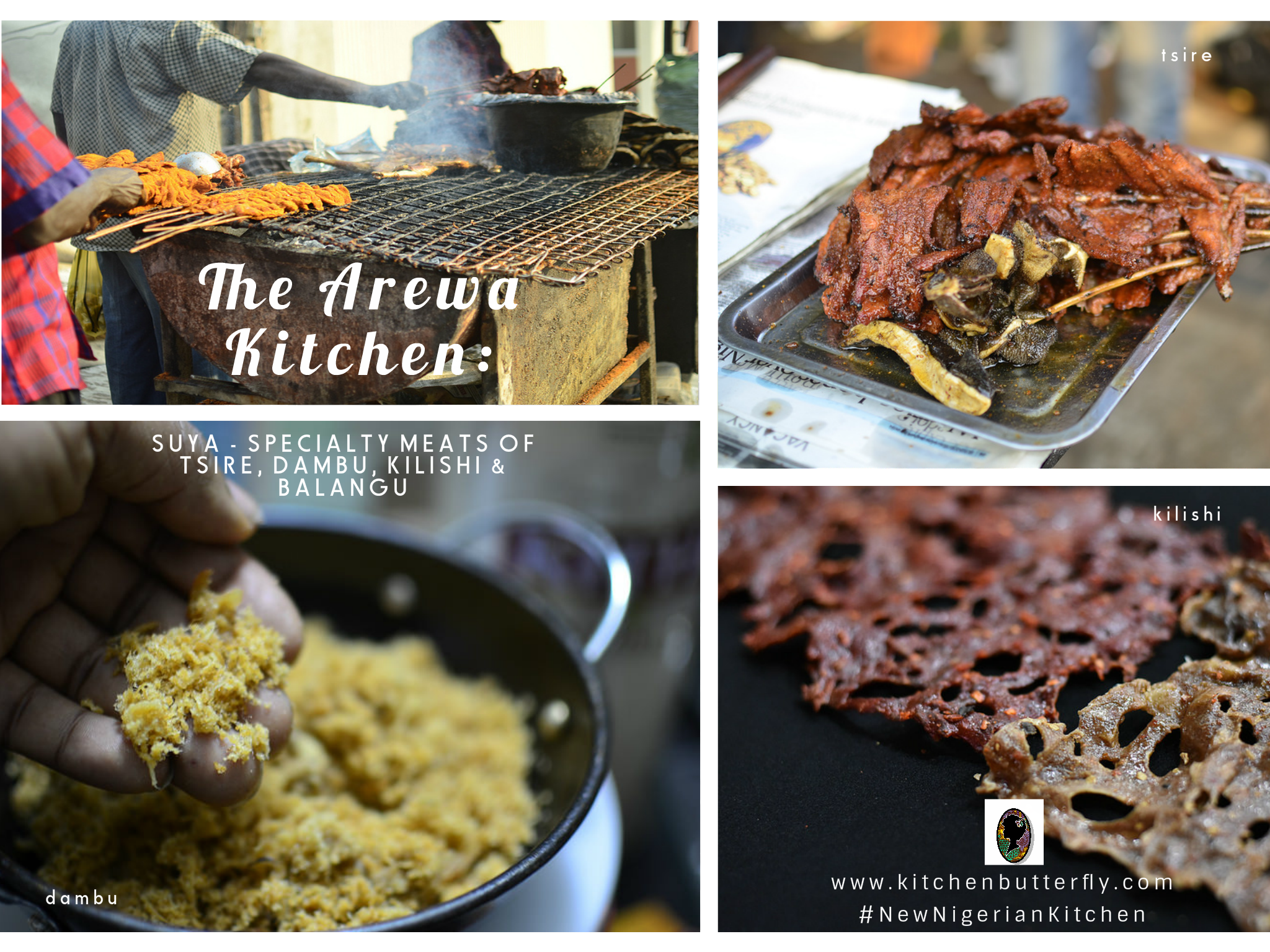
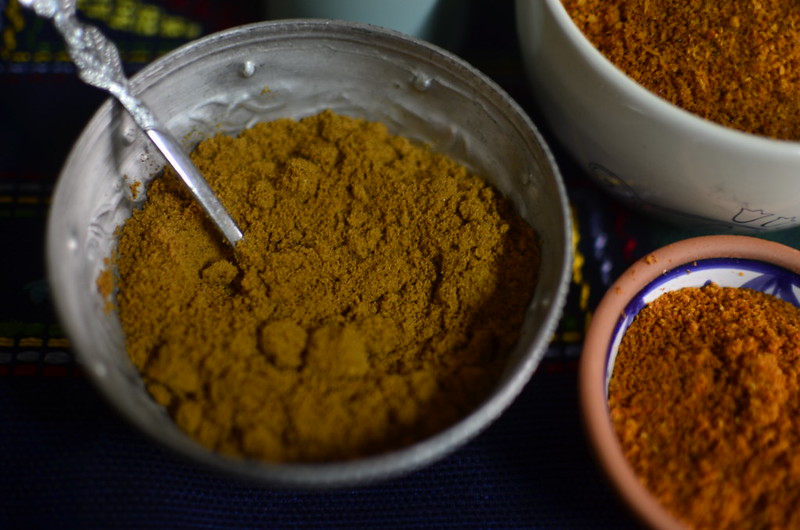
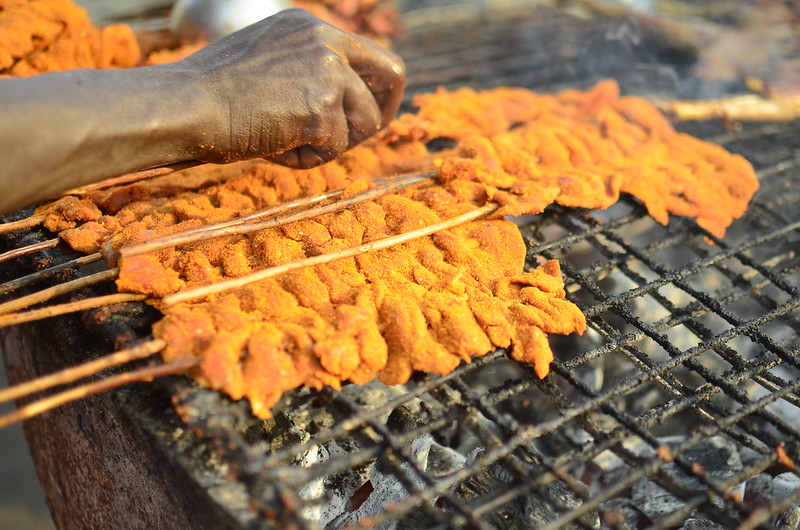
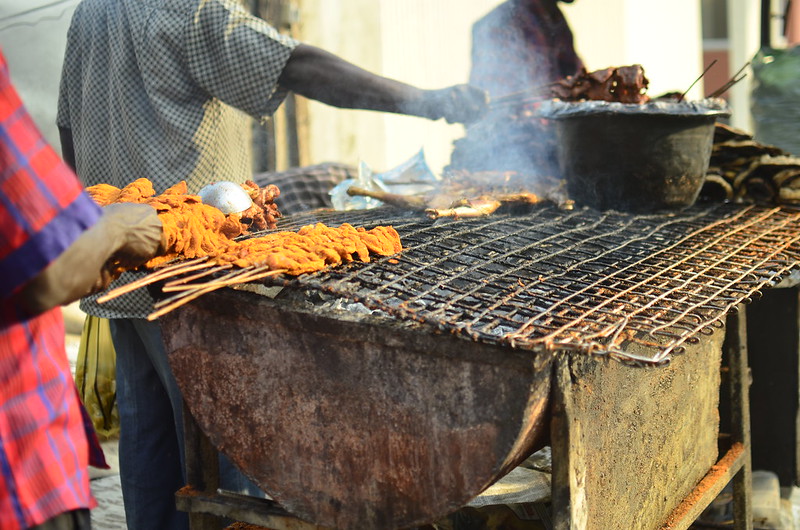
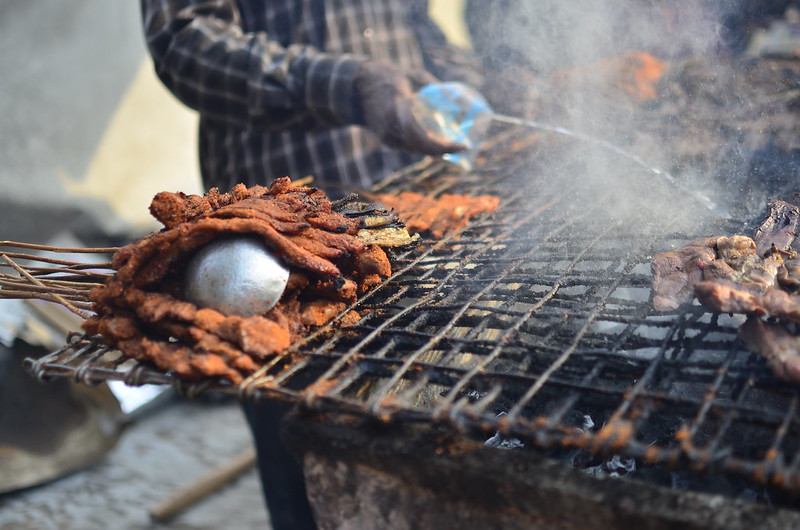
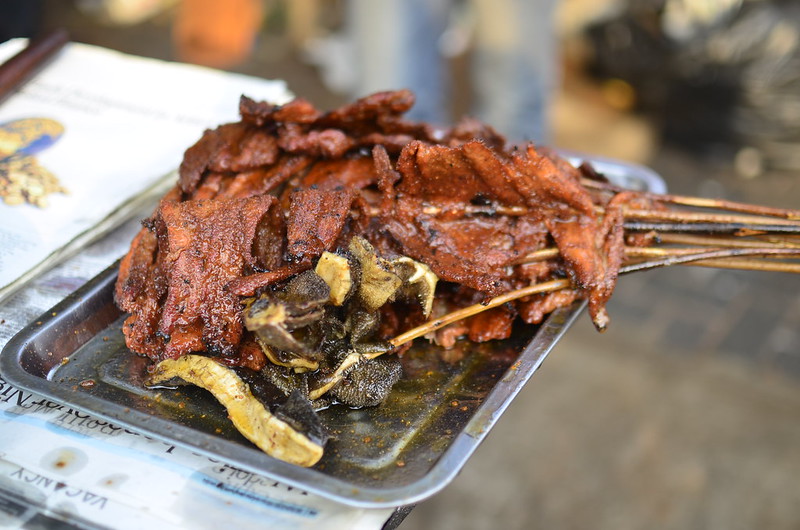
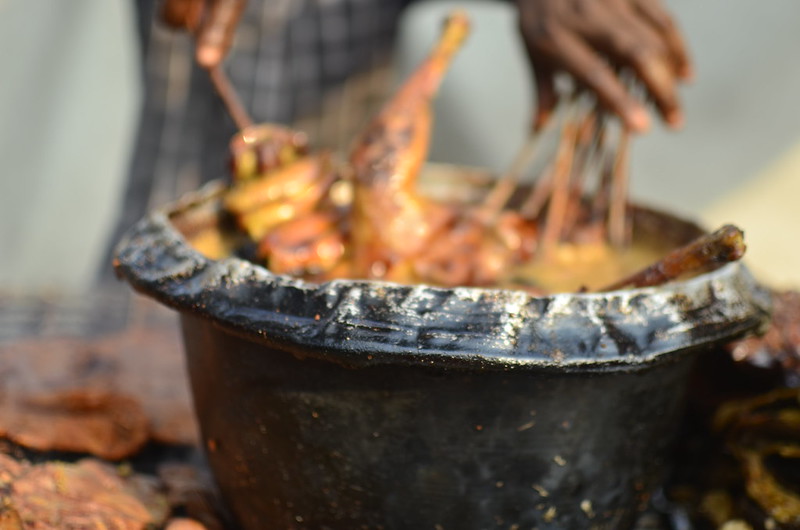
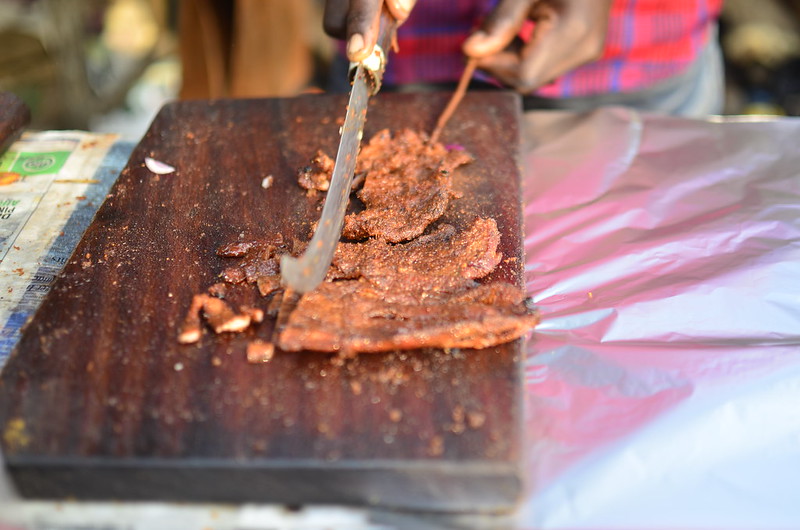
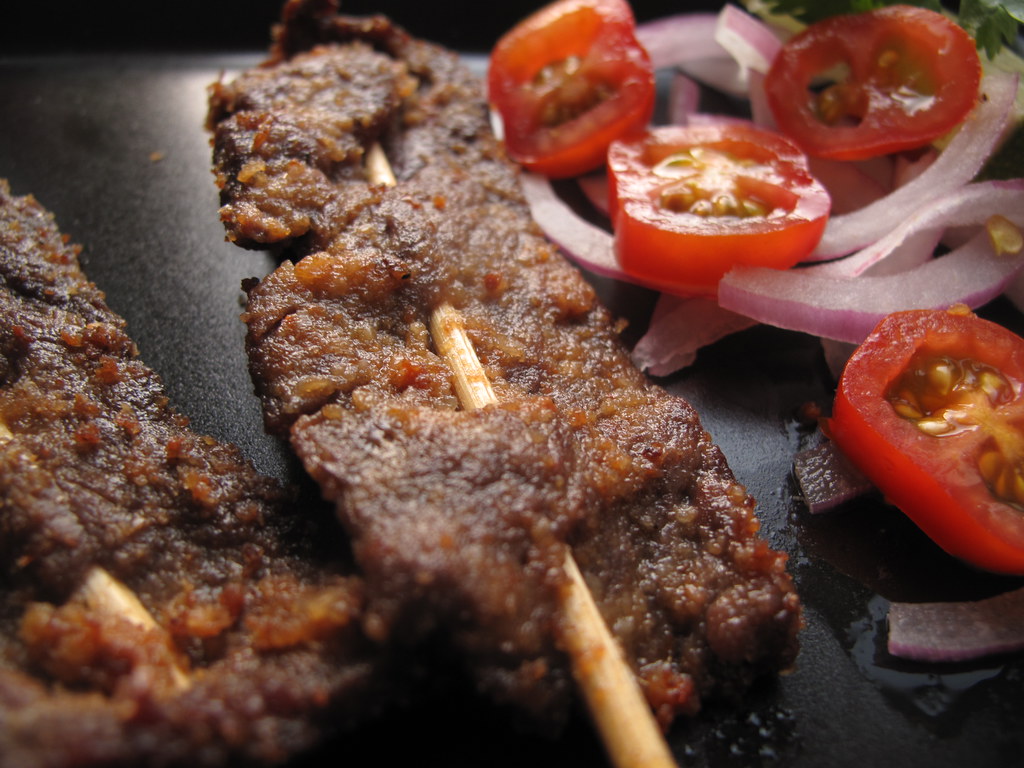
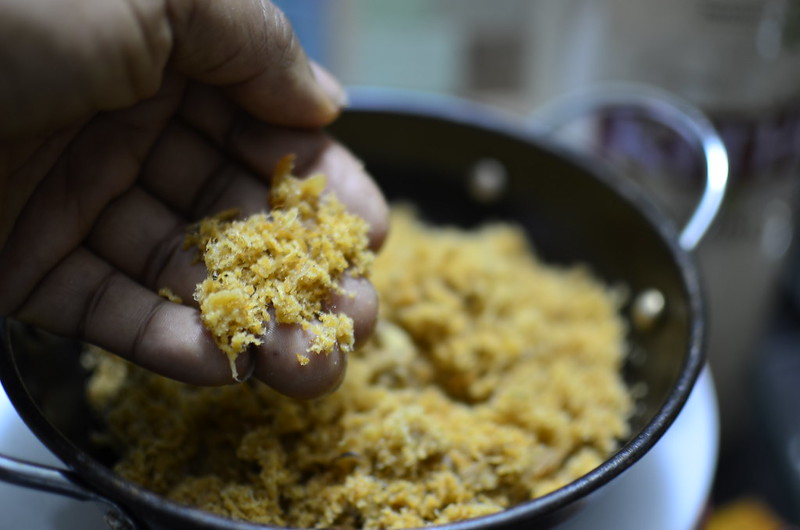
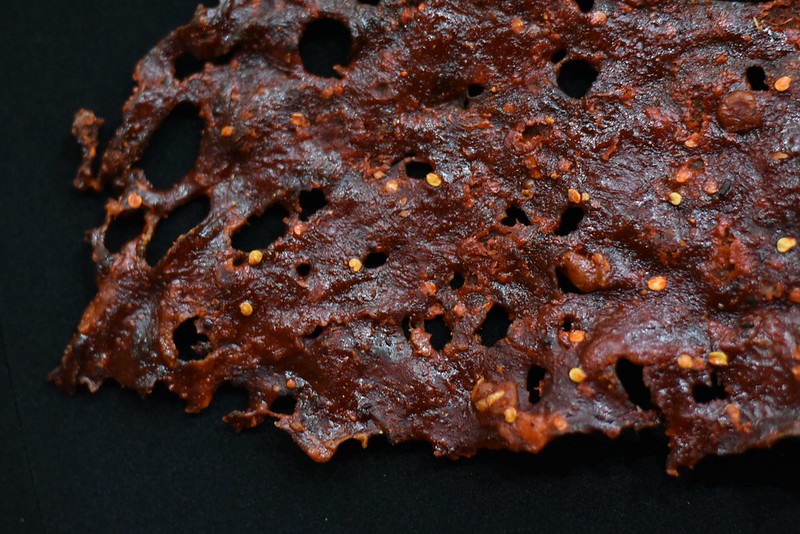
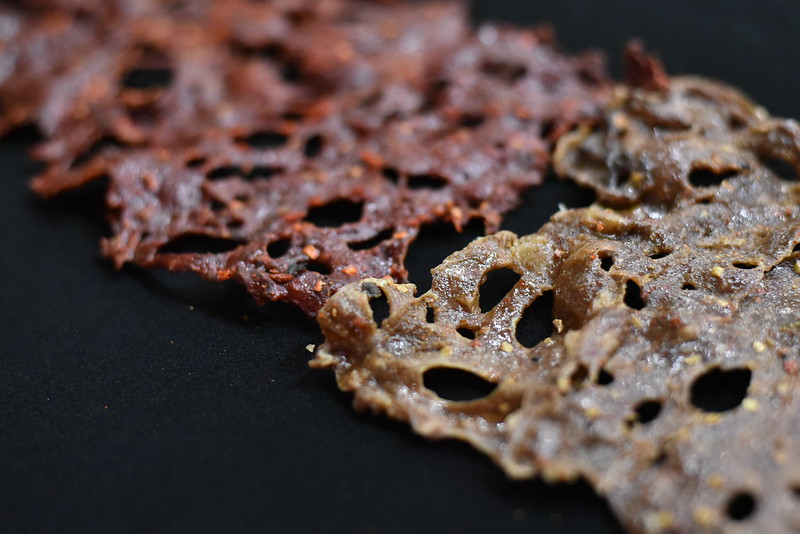
![20170131_123954[1]](https://c1.staticflickr.com/1/710/32146541954_e1bd366dc0_c.jpg)
![20170131_124057[1]](https://c1.staticflickr.com/3/2524/32175961073_b27b9757a9_c.jpg)
Leave a Reply